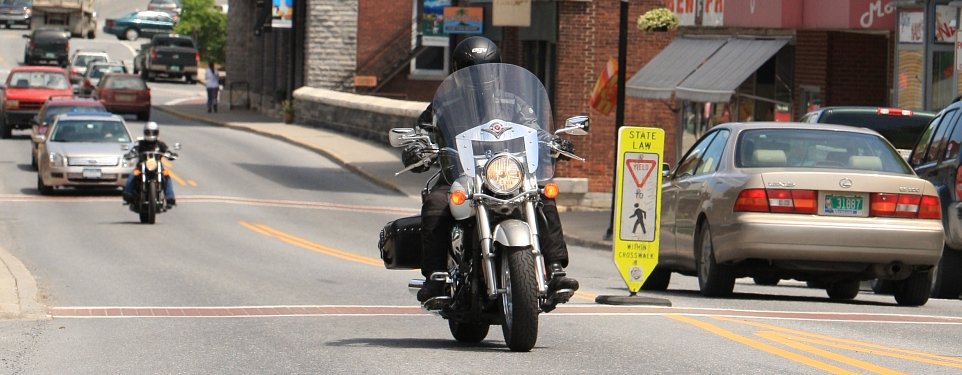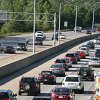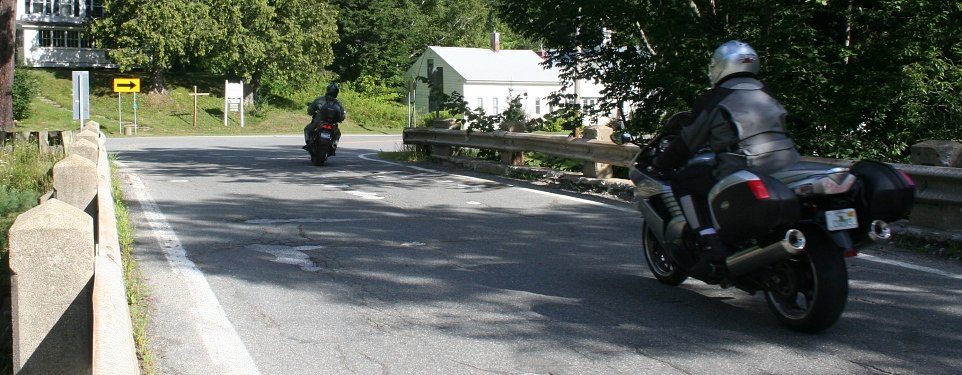After years of gradually declining highway deaths in the United States, fatalities have increased over the past two years in the biggest two-year jump in 50 years and are expected to top 40,000 when final numbers for 2016 are in, according to the National Safety Council.
As motorcyclists, we are the oxpecker birds on the backs of the rhinos. When the rhinos (cars) tussle, we’d best get out of the way or get crushed. So even though the NSC didn’t specifically address motorcycle crashes, I do think there’s something we can learn from their warning about rising highway deaths.

What causes traffic accident trends?
The simplest factor affecting the number of fatal traffic crashes is the number of people on the roads and how many miles they are traveling. That’s related to demographics, population growth, gas prices and the economy (people with jobs are commuting to work and have money for vacations, more than unemployed people). But there’s more to today’s statistics than that because the NSC found that motor vehicle mileage in 2016 was up three percent while deaths were up six percent.
Why the increase? Some of the findings in the NSC’s survey of drivers were disturbing, such as the 10 percent who admitted driving drunk in the last three months or the three percent who thought driving 20 mph over the speed limit in a school zone was acceptable. I think there’s more relevance in the fact that 47 percent said it was safe to send text messages using either voice commands or typing (and five percent even said typing a text message was safer than voice!).
I’m not the only one who thinks the difference between now and past years is increasing driver distraction. More gadgets in cars mean more drivers taking their eyes — and attention — off the road. It’s theory. I don’t have proof. But I think we’ve probably all seen plenty of supporting evidence out there on the road.

What’s the lesson for us?
Given that reality — more drivers with more distractions who are crashing more often — we only have three choices if we want to ride motorcycles.
- We can be one of those who decide we’re only going to ride off-road, or only on the track.
- We can go on as usual and hope nothing bad happens.
- We can recognize the reality, raise our awareness and learn to spot the signs of distracted driving (the car in the left lane that slowed from 70 mph to 50 because the driver just got a phone call, the car ahead drifting across the edge or center line) and adjust accordingly.
Choice number one is OK for some but not me; choice two is not responsible, in my opinion (as the saying goes, “Hope is not a strategy”); and that only leaves the third as a viable option for me.
How I’ve changed my riding habits
I’ve already adapted my riding habits to the new reality, and here’s how. In the Stayin’ Safe Advance Rider Training courses I’ve taken, much time is devoted to discussing the optimum lane position. The position that provides the most safety is constantly changing, depending on various factors. Sometimes you want to be in the left wheel track, sometimes in the right, and often you’ll be transitioning, depending on where the road is going ahead, your line of sight, intersections, surrounding traffic and other factors.
On a two-lane road, I have reduced the percentage of time I spend in the left wheel track to the point that I now consider the right wheel track to be my “default position.” Why? Because I’ve seen so many distracted drivers fiddling with a phone or other device and gradually drifting out of their lane. I can’t help but think that if I’m in the left wheel track and the driver of an oncoming car is trying to see if that incoming call is from his boss at work (better take it) or the bill collector he’s been dodging (not answering), he could easily move over into my path without noticing. Staying to the right gives me a bigger cushion.
Of course every gain has a corresponding downside. There are times when staying right may decrease my safety margin if a deer bursts from the woods. I’ll still move left if there’s a reason to, such as a car about to back out of a driveway on the right or I’m entering a righthand curve and need to extend my sight distance. But I’m more likely these days to stay right.
The next time I see Eric Trow I’m going to ask him if distracted driving has reached a level where it affects what he teaches in his courses. It has (slightly) affected my street strategy. What about yours?












